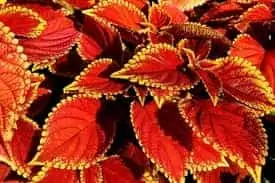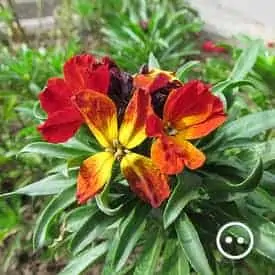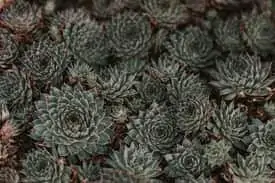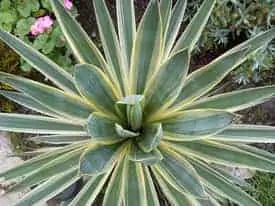In this time where everyone is getting houseplants for the sake of aesthetics, it is really important to know about the houseplants you are getting. Only then can you take care of them properly; at least, that is what I believe.
And, that is the very reason why I have made this guide for you so you can understand the plant life spans. I always had some difficulty figuring out what plants to get and how their life span works, so I figured you would also be going through the same.
Plant Life Spans. Plant life spans are basically three groups, Annuals, Perrenials, and Bi-annuals. Annuals live for 1 year, Perennials live for 2 years or longer up to 100 or more years. Biennials normally live about 2 years.
So, now that I am the owner of so many houseplants, I can guide you on this matter. Keep reading because some good stuff is coming your way.
Table of Contents
Plant Life Spans on The Basis of Life
Though not everyone uses this method to determine the lifespan of a plant, and it is relatively ancient, it is a pretty good way to describe a specific type of plant in simpler and easy words, and that is why I am adding this to the guide.
So, there are three different types of lifespans of plants based on how many years they live. It entirely depends upon whether they live for 6 months, a year, 2 years, or more than 2 years.
Most plants have a lifespan of only 1-2 years, but if taken care of properly, they can even last for a couple of decades, so you never know what you are dealing with. Certain plants have a lifespan of several decades.
The three types of lifespans based on life are:
Annuals

These plants perform their whole growth and dying cycle within one year. So, they only get one season to ultimately bloom, and then their roots and leaves die. The seeds of annual plants then go on and grow a new plant but only those dormant seeds.
And if you have an annual houseplant and you are waiting for it to bloom back, it will not happen because the plant has completed its lifespan. However, the seed of this plant can still germinate in the same planter so that you might get a baby annual plant.
Biennials

These plants live for two years with only one growing cycle. Once their flowers bloom and seeds produce, they die. This process occurs in two years, and in the first year of biennials, you won’t see any flowers or seeds because they grow in the second blooming season.
Once these plants die, their seeds can produce new plants, so no worries. If you are a person who needs a houseplant for a couple of years, then biennials are just the right choice for you, and also, they look stunning, so you really cannot resist at times.
Perennials

Perennial plants have just the right lifespan for you if you want plants that live and thrive for a couple of years. They usually die at the start of the winter season, but that is not the end of the story because they bloom back in the spring.
I have dozens of perennials in my garden because they are easy to take care of and last me a couple of years. On average, a perennial plant can live for 5-6 years if taken care of properly, and some of them even last for several decades, so you are in for a long-term relationship here.
Life Span on The Basis of Flowering
Now, we will discuss the lifespan of your houseplants based on their flowering cycles. Certain plants only produce flowers once in their whole life and then die, which is tragic for me to watch at least.
And other types of plants can produce flowers several times in their lives, and setting seeds is just a piece of cake for these plants. So, if you need plants that bloom every year, the second type is just for you.
Let me walk you through both types in detail, so you will know what type of plant you are dealing with at home.
| Definition | Monocarpic plants are a group of plants that only produce flowers or seeds once in their life span. | Polycarpic plants are the most diverse group of plants, they produce seeds, flowers, and fruit several times. |
Flowering | Once in a lifetime | Produce flowers every year |
| Dying After Flowering | Monocarpic plants die after flowering. | Polycarpic plants do not die after flowering. |
| Annuals or Perennials | Most monocarpic plants are annuals. | Most polycarpic plants are perennials. |
| Setting Seeds or Fruit | Monocarpic plants reproduce only once. | Polycarpic plants reproduce several times. |
| Suitability of Reproduction | Less suited for the environment. | Best suited for plants in the environment. |
| Examples | wheat, radishes, carrots, peas, beans, etc. | Grapes, mangos, apples, and oranges to name a few. |
Monocarpic Plants

These plants are not only beautiful but also hardy, but, to your surprise, they cannot really last longer than one flowering season. It does not mean that they will only live for a year or two, but it does mean that they will die as soon as they produce flowers and set seeds.
These plants are known to be very dedicated to their flowering because they use up all their resources and stored stuff just to produce flowers and seeds, which ends up literally killing them. It is really tragic for me, at least.
Certain monocarpic plants don’t really produce seeds and flowers right away, and they live for several years in their vegetation stage, and once they have lived a happy and long life, they go on with the flowering process and then die.
The thing that intrigues me the most about these plants is that sometimes, they even live for 40-50 years in the vegetation stage and don’t produce any flowers, and just like bamboo plants, once they produce a flower, they just die.
The most common example of a monocarpic plant is a banana tree because it lives for 20-25 years on average, and when it produces seeds, its stems die.
Polycarpic Plants

If you want or need plants that can bloom for several seasons before going on with a tragic death, then polycarpic are your best choice because they produce flowers and seeds several times before the end of their lifespan.
Also, these plants do not die right after producing seeds; they live for a year and then die sometimes. But ideally, these plants can produce flowers in every blooming season or once in every two seasons.
I have tons of polycarpic plants at my place, and they elevate the overall ambiance at my place with all the bright and fresh colors of flowers, and the good part is that they are not going to die anytime soon.
The average lifespan of polycarpic plants can be as long as 10 years, and they will reproduce several times in this lifespan to produce new seeds, which can help you increase your indoor plant collection.
Monocarpic plants die because they give up all their energy for the sake of flowering, but polycarpic plants here are a little witty, so they don’t just give up their energy but save some for themselves, which helps them survive after the flowering is done.
Famous examples of polycarpic plants are apples, mango, and grapes. We get to eat these fruits every year just because the plant blooms and produces flowers every year without dying. Let me tell you something shocking; some specimens of mango plants are 300 years old, but they are still producing fruit. I am thrilled by this.
Conclusion
I hope that this guide helped you understand the life cycles and why your houseplant is not flowering every year. Make sure to take good care of your houseplant and provide it with proper sunlight and water.
Because if anything can increase the life of your indoor plants, it is the care and attention you give so, don’t hold it back. I am going to water my houseplants; I hope you are going to do the same.
Have a great day
Recent Posts
Have you found yourself wondering, 'why is my bamboo growing so slow?' Despite the fact that bamboo plants are remarkably fast-growing, it can sometimes take months (or even years!) to see any signs...
Miracle-Gro is a huge help when you are trying to get decent yields out of your plants or if you want them to thrive. However, you may have noticed that a single dose of fertilizer does little to...
